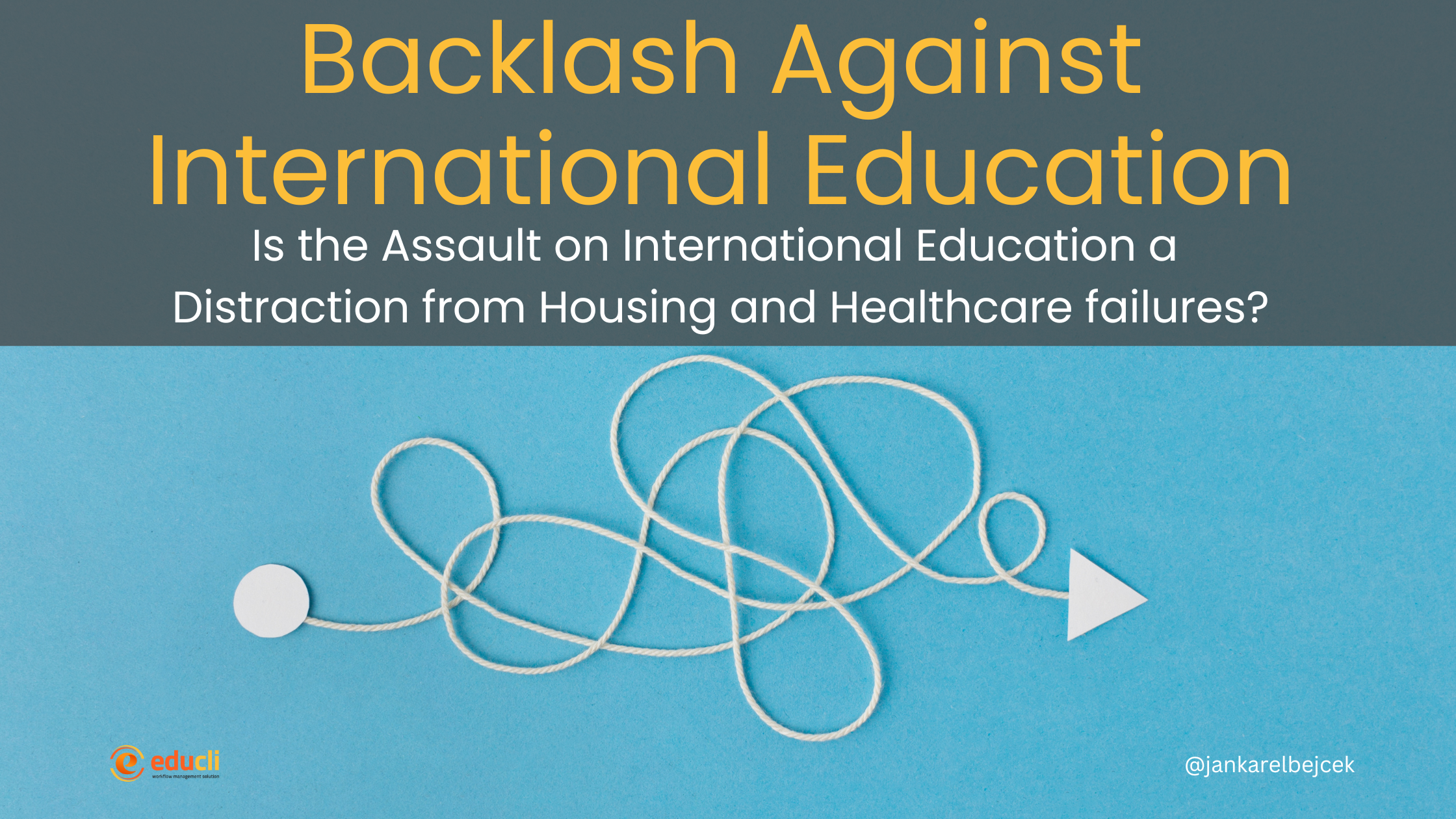Is the Assault on International Education a Distraction from Housing and Healthcare failures?
Australia’s international education sector has long been one of the country’s most valuable exports, driving economic growth, cultural exchange, and supplying much-needed skills to a rapidly aging workforce. Yet, recent policy shifts and rhetoric from the government signal a shift away from embracing international students, many of whom see Australia as an attractive place for study and, potentially, settlement. Is this recent hostility towards international education genuinely aimed at addressing the sector’s challenges, or is it a deflection from deeper, systemic issues in housing and healthcare that the Labor government seems unable to tackle?
The Growth of International Education and its Impact
Australia remains a prime destination for international students, attracting hundreds of thousands annually. According to recent data, Australia saw over 500,000 new enrollments in 2023, with students drawn to a range of courses from vocational training to prestigious university programs. While some pursue qualifications that align with Australia’s skills needs—like nursing, education, and engineering—a significant portion are in programs like accounting, MBA courses, and personal training, which are less immediately essential to the nation’s economic growth. However, the reality is that only a fraction of these students stay permanently; despite completing their studies and integrating into the community, only around 20-25% secure permanent residency.
The government’s recent policies restricting student visa approvals for essential sectors, such as nursing, construction, and other vital services, have left many puzzled. These fields are experiencing chronic shortages, with hospitals understaffed, construction sites delayed, and aged care facilities struggling to meet demand. The irony is glaring: while refusing applicants in these areas, Australia continues to grant visas to students pursuing degrees in areas with comparatively fewer job prospects in the local market. These trends raise questions about whether the government is effectively aligning migration policies with labor market demands.
The Real Issues: Housing and Healthcare
This focus on tightening regulations around international education may be deflecting from the government’s difficulties in addressing housing and healthcare, two sectors in crisis. Australia’s housing market is among the least affordable in the world, and a shortage of skilled healthcare workers has left the public health system stretched thin. Rather than addressing these root problems, the government has resorted to costly interventions, such as offering free TAFE programs, public transport discounts, and first home buyer grants—measures that provide temporary relief but fail to address underlying issues.
For instance, the first-home buyer grants have historically driven up housing prices, effectively negating any short-term affordability benefits. Meanwhile, free TAFE programs are a positive initiative, but they face limitations due to a lack of qualified instructors and the time it takes to train a new workforce. The government is attempting to fill these gaps domestically, yet the supply of skilled workers from within Australia is insufficient to meet the demands of a rapidly growing economy. Without a sustainable influx of skilled migrants, the nation’s economic growth risks stagnation, a reality many other developed countries are actively working to avoid.
The Disconnect Between Government and Industry
The international education sector and government have historically worked together to meet workforce needs and provide pathways for skilled migration. However, recent policy changes, executed with limited consultation, have led to confusion and concern within the industry. Changes in visa regulations, stricter scrutiny on students’ intentions, and frequent shifts in eligibility for post-study work rights have created instability and diminished Australia’s appeal as an education destination.
Industry leaders have repeatedly called for a collaborative approach with the government, advocating for policies that balance economic growth with community needs. Many of the issues the government seeks to address could benefit from industry input, especially considering international education’s vital role in Australia’s economic future. A clearer vision, jointly developed with industry representatives, could address both the need for skilled migrants and the concerns around housing and healthcare, providing a long-term solution that promotes sustainable growth.
Looking Forward
If Australia genuinely seeks to address the housing and healthcare crises, it must acknowledge the value of international students not just as a source of revenue but as future contributors to the nation’s prosperity. Many of these students are eager to stay and contribute, particularly in essential fields where Australia is most lacking. By reconsidering visa policies to prioritise applicants in high-demand sectors and aligning educational opportunities with skill shortages, Australia could take meaningful steps toward a more balanced and resilient economy.
In the end, the challenges in housing and healthcare cannot be solved by short-term interventions or by scapegoating international education. It will take a proactive, collaborative approach, where the government works with education providers, community leaders, and industry representatives to create a migration system that supports Australia’s future while addressing immediate societal needs. Without this partnership and foresight, Australia risks not only a plateau in economic growth but also a loss of its reputation as a welcoming and forward-thinking country for international students and skilled migrants alike.
#studyandliveinaustralia #studyabroad #studyinaustralia #PRAustralia #educli #internationaleducation #internationalstudents





Leave A Comment